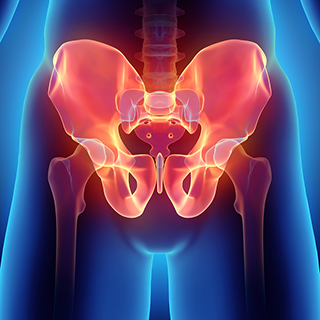CONDITIONS
Physiotherapy for Women’s Health

Physiotherapy for Incontinence
The NHS estimates that 3 to 6 million people in the UK are living with urinary incontinence, with it occurring in approximately 34% of women. Before you consider Physiotherapy for incontinence, I would like to explain the common causes, symptoms and possible solutions available to you.
Your pelvic floor is a sling of muscles that attaches to the bottom of your pelvis, supporting your pelvic organs and giving you control over your bladder and bowels. It is as important for men as for women, but often it is only mentioned or thought about after childbirth.
There are two main types of urinary incontinence – stress or urge, with some people suffering from both. The causes and treatment are the same for each type in most cases and men can be affected as well as women.
Stress incontinence is when the pelvic floor is unable to prevent urine from leaking when put under pressure. This may be when you cough, sneeze or exercise.
Urge incontinence is the inability to stop urine flow when your bladder feels that it is full, sometimes called an overactive bladder. It is why some people will always go to the bathroom ‘just in case’ and will normally be very aware of when the next opportunity to go will be.
Urinary incontinence is normally blamed on a weak pelvic floor and sufferers are given exercises to strengthen it. This approach would be effective if that was the only reason, but remember that your pelvic floor is connected to the rest of your body, and it doesn’t work in isolation. So if you have a history that includes back pain, pelvic rotation, childbirth, surgery or trauma (particularly in the abdominal or pelvic area) or pelvic organ prolapse, it is highly likely that they are contributing to the weakness.
Finding and treating the cause will be much more successful than doing exercises alone to try and overcome the problem. Once your pelvic floor is no longer tight and twisted because of strain from other areas of your body, the exercises will be much more effective.
Physiotherapy for incontinence aims to help patients to manage their symptoms and lead a more active life.
Physiotherapy for Pelvic organ prolapse
Before you consider Physiotherapy for pelvic organ prolapse, I would like to give you a bit of information about it.
Pelvic organ prolapse is when one or more of the organs in the pelvis slip down from their normal position and bulge into the vagina. It can be the womb (uterus), bowel, bladder or top of the vagina.
– as defined by NHS UK.
A prolapse can cause pain and discomfort and a heavy, dragging sensation. It may also be associated with incontinence and difficulty emptying your bladder.
It is important to have symptoms like these checked by a medical professional, but often manual therapies, specialist exercise programmes are very beneficial and can avoid the need for surgical intervention.
Physiotherapy for pelvic organ prolapse is very helpful in reducing symptoms and teaching people how to manage their condition.
Physiotherapy for pelvic pain
Before you consider Physiotherapy for pelvic pain, I would like to give you a bit of information about it.
There are many different causes and types of pelvic pain, including infection, bowel conditions and gynaecological issues. So it is very important that you seek a medical opinion in the first instance. If you have received the recommended assessment, investigations and treatment and you are still having symptoms, hands-on treatment such as Physiotherapy can be very beneficial.
Ongoing or chronic pain is often linked to scar tissue from operations and procedures, pelvic mis-alignment and restrictions elsewhere in the body. These are conditions where Myofascial Release for pelvic pain can help the symptoms and treat the cause.
If you would like to discuss options for Physiotherapy treatment, please feel free to contact us via this website or give us a call on 01279 718331.
Holisticare is a UK based treatment centre, situated in a beautiful, rural Hertfordshire and Essex border location, with easy access via London and Cambridge rail and road links.
next steps
Please do get in touch
We can discuss your condition and provide ‘no-obligation’ guidance…